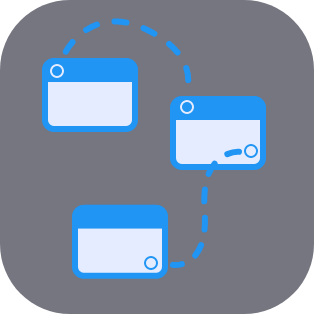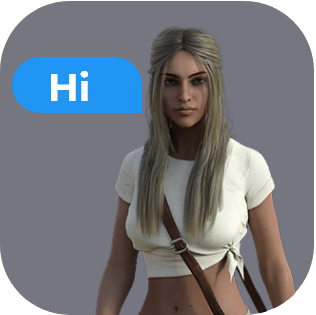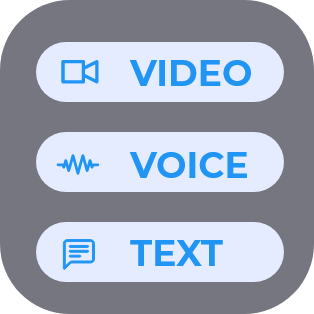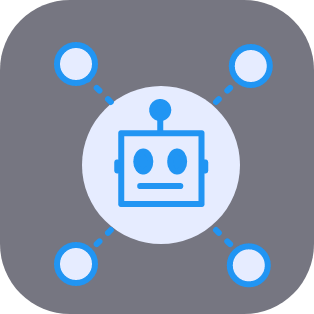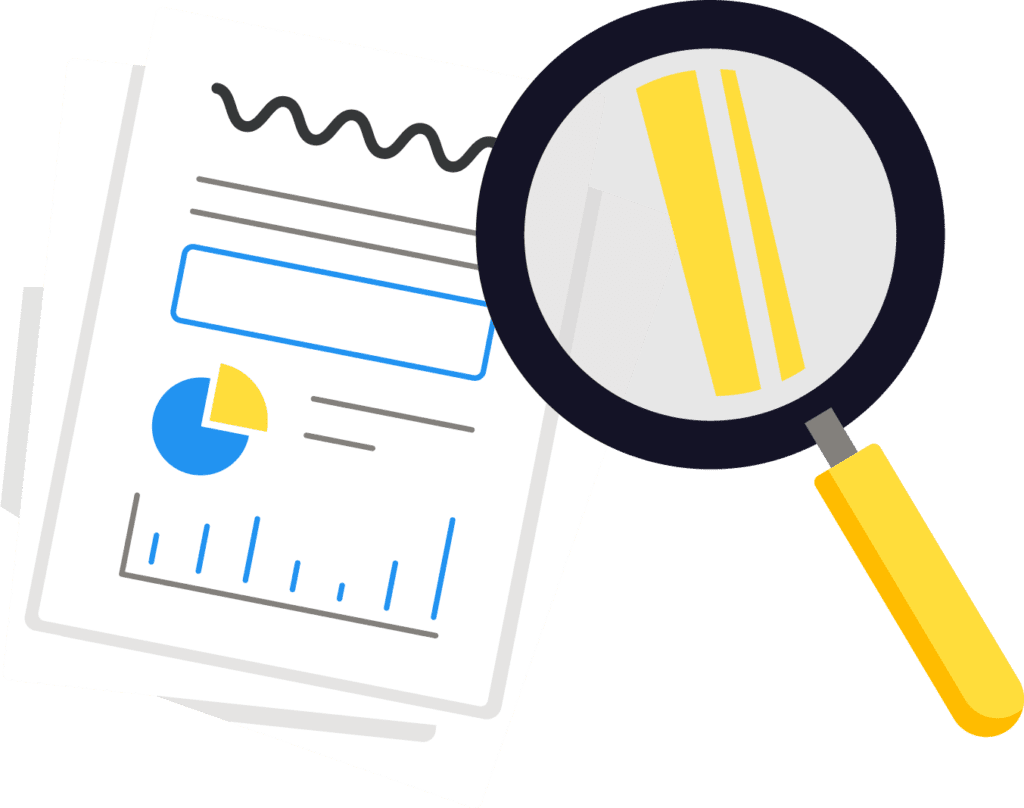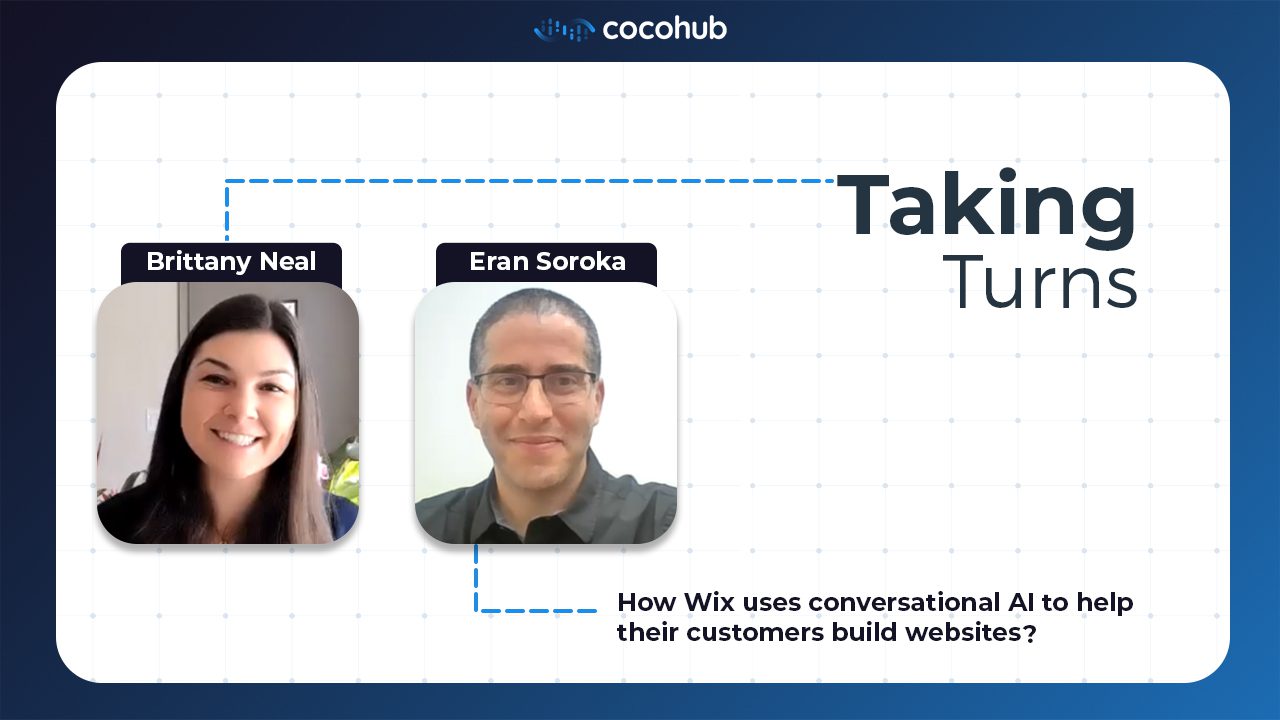It’s hard to find somebody – especially a website builder – that never heard about Wix. The Israeli company, with thousands of employees around the globe, became associated with easy website building. Then, to further simplify the process, the Wix chatbot comes to the rescue.
Brittany Neal, a conversation designer for Wix.com, had a fun and twisting into this role. From NLP to being the actual voice for a skill that operates air conditioning, she’s here to give a fresh look at her experience and the challenges from being the connector between millions of users – to the live agents department.
How did you get to conversation design?
I had a fun journey into conversation design. First, I was majoring in linguistics back at UC Santa Barbara. Then right at the very end, these things were still very new. When I first heard about NLP, I took a computational linguistics course. In particular, I was just fascinated that we were getting machines to speak and that we can get machines to understand us. Because it was just such a fascinating field, I knew I wanted to go deeper in.
Eventually I left college, needed a job, got a PM job at a translation company. Still I was staying with language, definitely loved language. Then I continued on and actually joined an accelerated coding bootcamp called Hackbright, because I wanted to go back to the NLP. Since I liked coding, I wanted to get back into that sphere. That way, I got my feet wet in the tech arena. Then from there, I finally landed on it, when I got a job as an NLP software engineer at Midea. There, they were doing things like that, with making computers understand these systems. After couple of years, I moved up, got to full status there.
Conversation design is an actual profession?
Unfortunately, I was realizing that with just NLP work and research, my other talents weren’t being quite tapped into. I was working with a lot of really smart people there, a lot of PhDs, and was learning a lot. However, I felt that my communication and writing skills are going untapped.
So I started to look into technical writing, actually, and went through a whirlwind of trying different things out. While surfing on Reddit, I found this free technical writing Institute. There, they had a free Guinea pig program right when COVID started, basically. Although I’ve been doing a little conversation design on Midea, I hadn’t thought of it as conversation side.
There, that was the fun part. So I wanted to dive more in there. So just happenstance, took this fun technical writing workshop and learned a lot more about that. Once I found that conversation design itself was an actual sphere and actual job I could do, and I could just meld all of these different skills together, I just dove all-in to researching exactly what it was. And it was still new. Conversation Designer was not even a firm title yet. Now I think it’s gaining a lot of traction, which is awesome, but we still see tons of wild titles. It does encompass a lot too.
Then, I got reached out to by a wonderful recruiter who wanted me to work at Wix and Wix agreed… So I’m very happy here as a full conversation designer. I just dove all-in into the research and joined these communities and all of them just led me right to Wix.
What’s the project or bot that you’re most proud of, so far?
Probably, I’d say that any project I’m working on at that moment. Because I can take all my skills that I’ve learned, and then you work on the new thing. Right now, that’s the WIX Chatbot, definitely. Now we’re cultivating it, watching it grow, and it’s just a very fun project to work on. Since it expands to a wider realm of different departments, helping so many different people, I’m proud of it too.
Can you talk a bit about your work at Wix nowadays and how you’re contributing to the company’s conversation design standards?
So I was brought on as a full conversation designer. We’re still a small team. So we have the Wix chatbot, a customer support bot, and just my day-to-day is building out conversations. For anybody who’s not familiar, the Wix platform is a website building platform. There, we enable anybody from anywhere and any background to come in and build a website for themselves. Just drag and drop elements make it simple to do. Even if you don’t have any coding experience or any website building experience, anybody can do it.
Then, with so many features of the bot, there is a lot to it. So when people use the platform, for help they can reach out to support. Although we have many, many human agents, our way to connect them is through the chatbot. So from all departments over the company, people are asking us to add more to the chatbot. They want to give users more information so they can solve it themselves, a lot of people like that. Also just building out these flows, identifying the problem that somebody is having is a whole challenge in itself. So identifying that, then writing a conversational flow to try to solve that.
Previously on Taking Turns | To the full playlist
Christy Torres talks financial bots, and how to make users feel safe
Tess Tettelin knows how to handle multilingual bots
Janaina Pereira with a tip for banking bots
Can you talk about the challenge of building voice apps specifically? Because it’s a subject that’s close to your heart, and to your ear probably.
Although with the Wix chatbot, we’re not looking at voice at this time, I do love voice apps. That’s another thing that brought me into the conversation design sphere.
Besides the Wix chatbot which I work on now, the second thing I’m proud of would probably be my project at Midea. There, I actually was the voice of the bot, which was a lot of fun. So I was working on an air conditioning command bot. Basically it wasn’t a full-on conversation, just commands for smart devices.
Although using your voice is not a requirement when building voice bots, that really just got me looking more into voice. Joining the robust voice community was very helpful for getting into conversation design as well. There, all these smart, interesting people just want to chat about tech and the voice community. So working on voice apps is a ton of fun, and it is shockingly different from chatbot conversation design, too.
Another cool thing is the Women in Voice community. While I started delving into the voice realm, I had no idea where to start to build. First I went on to the Amazon site, but it was tricky. So I actually reached out through Women in Voice to somebody I didn’t know at all. After I asked her if she’d be my mentor, she said Yes. So she gave me some content on making a voice app, taught me about VoiceFlow, which is a wonderful product for building voice apps, and just brought me into the realm. It’s a ton of fun.
What’s the most important thing for a chatbot or voice bot, in your opinion?
So I’ve been thinking about this one a lot, because there’s just not one feature. These are such complex systems that you can’t just pick only one thing. However, I think the common thing you can narrow down, the thing you need to build – is trust. As a result, the one feature that you can add to a bot is just consistency. And that comes with having the important part of having a persona – things that people are going to want to engage with.
First of all, everybody is sick and tired of stupid bots. Having a problem, you come to it frustrated and you just want to solve your problem. Then it can’t understand you because it’s a machine. And so that’s why, it’s pretty well established. We don’t have general intelligence yet, which would be limitless, but not confined to a domain. At this point you need a solid domain, and to promote trust. You need just to start small and grow from there. Only if you can solve what’s going on, can you build that trust. So all those things come together where you need consistency in voice and tone to build trust.
That also helps because conversation is about trust. We have, like, the cooperative principle. So with humans, our brains are still wired to when you’re talking to something that we’re thinking we’re talking to humans. When you break those principles of trust, it just gets people too frustrated.
What’s the funniest thing or the most awkward thing that happened to you as a conversation designer so far?
So I think every conversation designer has just funny little stories. For example, arguing passionately about ‘should that be period or colon’, or just tiny little things? So we had a really talented writer, right? The Wix, the new Wix chatbot persona.
While looking at the slides for this, I brought it up to my manager. There were a few words we didn’t really use anymore. For instance, we just “got it” and we can use “gotcha”. These are two things. Then there was another one where we said “alright”, and then on the slide deck it said “alrighty”. So I thought, we don’t really use ‘Alrighty’. Although it’s just one letter, it’s just a totally different tone and voice. As I bring this up to my manager – I was converting this into a conversation design book – he’s like, ‘Oh no, we are not using Alrighty, like that’s just too… That’s just too whimsical, too, too dorky for the bot’.
Then I’m racking my brain and I’m like, ‘Oh my God, I use Alrighty all the time in my regular speech’. So I got off this meeting with my manager and I at the end, I couldn’t help. But this is how I sign up! I’m like, ‘alrighty, I’ll see you later’ as we end the call. And I’m like, Oh no, I’m dorky… I would not put that in the Wix bot, but I like the word Alrighty, and I don’t care what it makes me. I’m gonna continue to use it.
If somebody wants to be a conversation designer like you to have an awesome job like you, what tips or advice can you give this person?
Absolutely, just tap into the robust community, don’t hesitate. Let’s say people know that they want to be writers and to work on chatbots. That should not limit them from joining the voice community, where a lot of those conversations are happening and driving lots of really interesting conversations about conversation design, about the voice community and chatbots.
In addition, there are some great book recommendations too. Something that really leveled up my writing, was the guide to microcopy by Kinneret Yifrah. That’s what I always recommend first off to anybody. Because it’s just such a fun book and everything makes sense. Actually she even references Wix in there too. I love that book.
Also, realize that this space is still young. Conversation designer is not confined to one set of skills. It’s many skills and all into one. Then, if you don’t have all of the skills, you can learn it, you can be taught. So it’s going to depend on the company that you end up planning upon, what they need you for. You might have one set of skills, your co-worker might have another one, you fit together and that’s a team. Dive right in, tap into the community, know that there’s a lot of different places that you can fit there.
Give us one forecast for the future of conversational AI and chatbots, in your opinion.
Here, I’m tapping back into voice. I think voice is definitely the future of this realm. Once we can just speak to our systems, it’s going to be such a game changer. At this point, most voice applications are still recreational. I think more resources should be put into it now, because it can be so lucrative, a really profitable space. Once the systems level up and we start putting more resources so they can level up faster, it’s going to be very good for everybody involved.
Then, there’s another thing. I have this feeling the current system that NLP kind of just jumped when we figured out some models. I think it’s going to be that similar type of exponential growth. We’re going to figure out a new system like we don’t have any current solutions. We can’t just make a better thing with the tools we have right now. That’s gonna close that gap. I think there’s going to be a major breakthrough hopefully soon. And that is going to be what’s going to bring us the jump.
More Compelling CoContent
How to invite a videobot to online meetings?
How to create an FAQ bot in cocohub?
What is Wizard of Oz testing? And Omnichannel? Check out our dictionary
Next time, another episode of Coming To Terms with Miri is coming your way! Hungry for more? Join our newsletter | Follow us on YouTube | LinkedIn | Instagram | Or join our communities on Discord & Meetup

